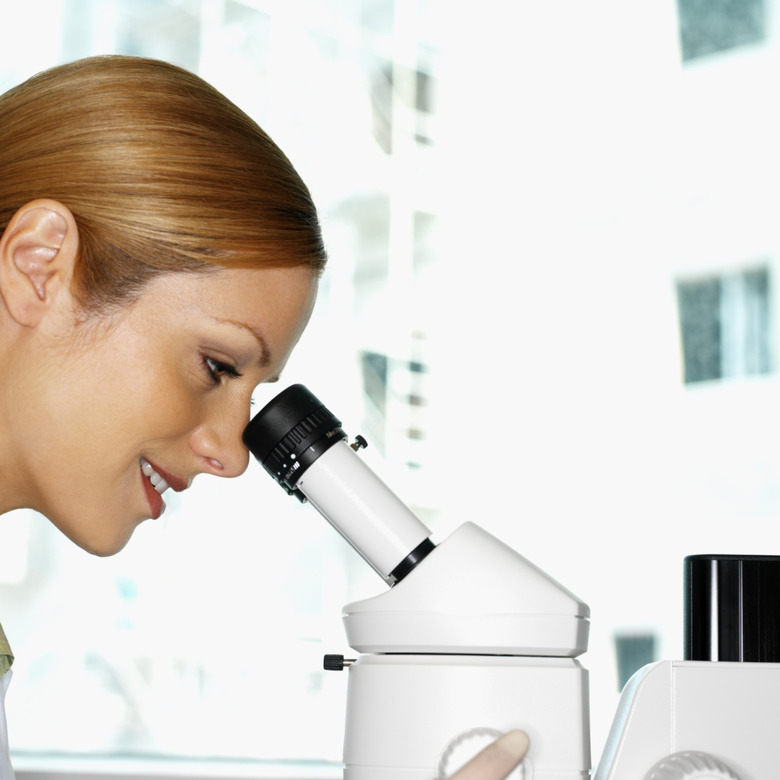How Does Rough ER Work With Ribosomes?
Proteins are largely responsible for an organism's structure and function. As we know, DNA encodes for instructions on how to make certain proteins. An RNA strand serves as an instruction template for creating the protein at a ribosome. The protein synthesis at the ribosome can take place in the cytoplasm or at an organelle called the endoplasmic reticulum.
In organisms with an organized nucleus, known as eukaryotes, the endoplasmic reticulum and ribosomes play important roles in the synthesis of proteins. Specifically, it's the rough endoplasmic reticulum, not the smooth endoplasmic reticulum, that has a part in the protein synthesis timeline.
The point of attachment between a ribosome and the ER is a sophisticated pore known as a translocon. It's the job of the translocon to grab ribosomes and allow newly minted proteins to enter the ER.
Endoplasmic Reticulum Definition
Endoplasmic Reticulum Definition
The ER is a set of tubes and sacs, called cisternae, enclosed in a network of membranes. The ER extends from the outer surface of the nuclear membrane into the cell body. Rough ER is a host for ribosomes that continually attach to and detach from the ER surface. Essentially, the endoplasmic reticulum and ribosomes work together in order to synthesize proteins and have them transported to their final destination.
The rough ER's main function is to help form and store proteins, while the smooth ER store lipids, a type of fat. The whole reason why it's called "rough" is because the ribosomes attaching to it give it a "bumpy" or "rough" appearance.
Read more about the structure and function about the endoplasmic reticulum (with diagram).
Many of the proteins created by attached ribosomes pass into the rough ER and then travel to other parts of the cell for either use, storage, or transport out of the cell to another part of the organism.
The Ribosome
The Ribosome
Ribosomes are composed of ribosomal RNA and proteins. They are manufactured in the cell nucleus in two types of subunits, the large and the small. The subunits transfer to the cell body, where they float free in the cytoplasm or attach to the rough ER.
Ribosomes read strands of messenger RNA (mRNA) and bind matching units of transfer RNA (tRNA) to the currently read portion. The ribosome and its associated enzymes transfer an amino acid from the transfer RNA to an elongating length of protein in a process called translation.
Read more about the structure and function of ribosomes in eukaryotes and prokaryotes.
The Translocon
The Translocon
The translocons are tiny docking stations on the rough ER surface that lock onto ribosomes. When a ribosome begins making proteins, the translocon opens enough for the newly created protein to feed into the pore of the endoplasmic reticulum. The new protein passes into the pore in a linear or helical form, because the pore is too small to allow a folded protein to pass within. The translocon pore only opens if it recognizes a special sequence of amino acids that ribosomes use to start a newly created protein.
Fate of the Protein
Fate of the Protein
The translocon controls whether the new protein will be incorporated into the plasma membrane or will be stored in soluble form within the ER. The proteins that enter the tight confines of the ER membranes get bent and folded into their characteristic final shapes. These shapes result in part from atomic bonds between different portions of the protein molecule.
The ER performs "quality control" by transporting abnormal or misshaped proteins back into the cell body where they are recycled. Stored proteins travel into another cell organelle, called the Golgi apparatus, and eventually exit the cell via a vesicle. When the ribosome finishes synthesizing a protein, the translocon ejects the ribosome and plugs up the pore until another protein needs to be synthesized.
Cite This Article
MLA
Finance, Eric Bank, MBA, MS. "How Does Rough ER Work With Ribosomes?" sciencing.com, https://www.sciencing.com/rough-er-work-ribosomes-15057/. 30 July 2019.
APA
Finance, Eric Bank, MBA, MS. (2019, July 30). How Does Rough ER Work With Ribosomes?. sciencing.com. Retrieved from https://www.sciencing.com/rough-er-work-ribosomes-15057/
Chicago
Finance, Eric Bank, MBA, MS. How Does Rough ER Work With Ribosomes? last modified March 24, 2022. https://www.sciencing.com/rough-er-work-ribosomes-15057/
